Gardens have always played a fundamental role in Italian culture and landscape, representing the harmonious interaction between man and nature. Italy has been called the “Garden of Europe” thanks to the beauty of its landscapes, the result of a skillful combination of natural elements and human intervention, including some of the most beautiful gardens in Italy, true masterpieces of art and botany.
From north to south, the Italian territory is home to an extraordinary variety of gardens: from the lush parks of Tuscany, such as the Boboli Gardens in Florence, to the lush green spaces of Sicily, influenced by Arab rule that introduced new botanical species. These gardens are fascinating because of their undisputed natural beauty as well as historical and artistic evidence.
Just think that in the Renaissance, for example, Italian-style gardens embodied ideals of order and proportion, becoming models for all of Europe. Today, visiting these gardens means rediscovering the essence of the Italian landscape.

The most beautiful gardens in Italy: 20 paradises to discover
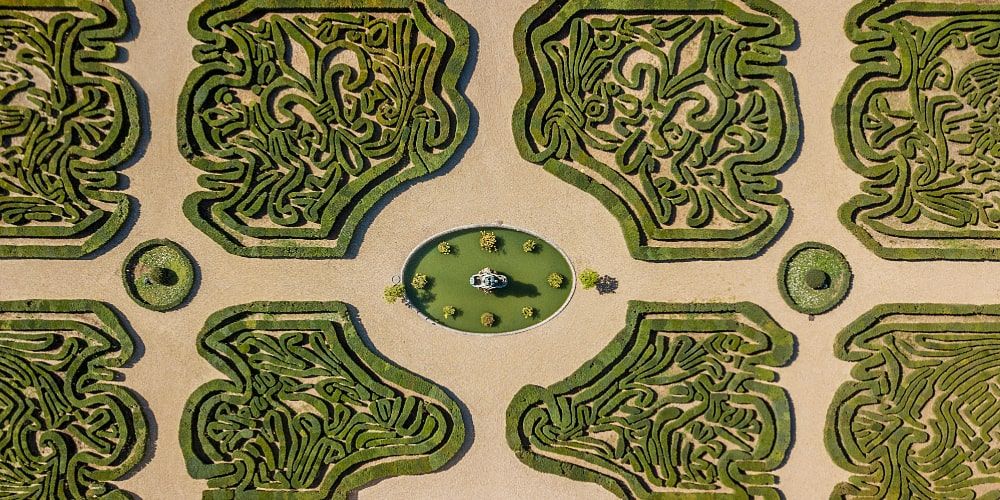
To explore the most beautiful gardens in Italy means to delve into nature, art, and history. This selection of 20 gardens represents the excellence of Italy's landscape heritage. You will enjoy unique and unforgettable experiences. The chosen gardens stand out for their historical and artistic value, as testimonies of eras and cultural movements that have influenced landscape architecture.
Many of them are home to an extraordinary variety of plant species, including rare and exotic plants, creating rich and fascinating ecosystems. Conservation status and accessibility have been key criteria in the selection process to ensure that visitors can enjoy places that are well cared for and easily accessible.
In this article, you will discover gardens ranging from classic Italian-style gardens, characterized by strict geometries and perfect symmetries, to romantic parks with more natural and sinuous landscapes. Each garden tells a unique story. And it reflects the traditions and cultural influences of the region in which it is located. Get ready to immerse yourself in a journey that will take you through 20 green havens, each with its own unique features.
Listen to the podcast version of the article with Monna Lisa and Leonardo's voices
Lama degli Ulivi Botanical Garden
In the middle of the Apulian countryside, the Lama degli Ulivi Botanical Garden in Monopoli covers an area of about three hectares. It offers a unique experience that perfectly combines nature, history and sacred art. This garden is home to more than 2,000 plant species from around the world, including native plants of the Mediterranean maquis and exotic species from Australia, South Africa and South America. The path winds through a llama, a karst depression typical of the region, enhanced by centuries-old olive trees, dry stone walls and two frescoed rock churches.
The rock churches of Iacovella and Santa Cecilia, dating from 1000 to 1200 AD, were built by monks who fled the Ottoman Empire during the Christian persecution. The former, partially excavated in the rock and intended for Greek worship, preserves frescoes from different periods, while the latter features splendid polychrome paintings. The garden, in addition to its extraordinary biodiversity, thus stands as the custodian of a valuable historical and artistic heritage, making it a must-see for lovers of nature and culture.
19. Villa Carlotta Garden
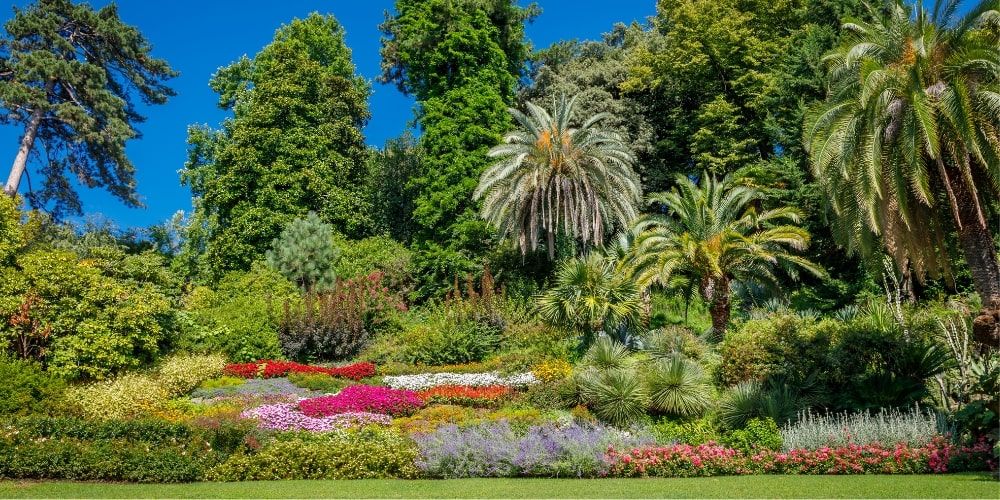
Located in Tremezzina, on the shores of Lake Como, the Villa Carlotta Garden is a true sensory experience. Stretching over about eight hectares, these botanical gardens boast an extraordinary variety of plants, including more than 150 species of azaleas, rhododendrons, camellias, and centuries-old trees such as cedars and redwoods.
The Italianate garden, with its terraces adorned with statues and water features, is an impeccable example of 17th-century landscape architecture. The villa itself houses masterpieces by artists such as Antonio Canova and Francesco Hayez, making Villa Carlotta a must-see destination for botany and art enthusiasts.
18. Giusti Garden
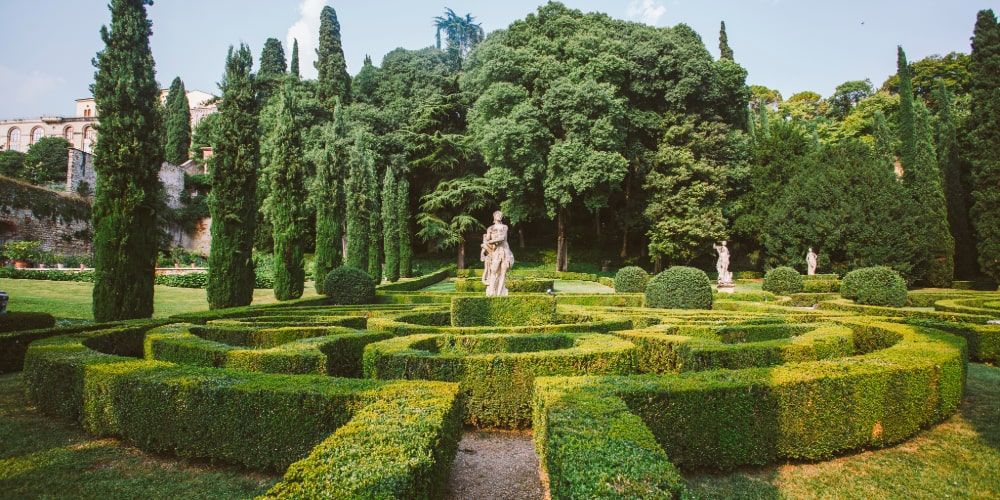
In the heart of Verona, the Giusti Garden represents a Renaissance jewel that has enchanted visitors for centuries. Created in the second half of the 16th century, this green space offers a perfect blend of art, history and nature. Strolling through avenues adorned with mythological statues, fountains and ancient grottos, one can admire a variety of centuries-old plants and fragrant flowers. The garden, still owned by the Giusti family, preserves its original structure intact. It also offers panoramic views of the city and a labyrinth of hedges that fascinates young and old alike.
17. Gardens of Villa Lante

In Bagnaia, a hamlet of Viterbo, is the splendid Villa Lante, a masterpiece of the Italian Renaissance attributed to architect Jacopo Barozzi da Vignola. Commissioned by Cardinal Gianfrancesco Gambara in the 16th century, the villa is famous for its Italian-style gardens, characterized by sloping terraces, dramatic fountains and water features that create a perfect harmony between architecture and landscape.
Among the most notable fountains is the Fountain of the Moors, by Giambologna, located in the center of the main garden. The twin palaces, known as casini, feature frescoed loggias and offer panoramic views of the gardens below.
16. Gardens of Villa Barberini

Perched on the picturesque slopes of the Alban Hills, a short distance from Rome, the Papal Villas of Castel Gandolfo represent an oasis of peace and beauty, historically reserved for the summer rest of the Pontiffs since 1620. The Barberini Gardens, the green heart of this complex, extend over some 55 hectares.
Strolling through avenues shaded by centuries-old trees, one can admire Baroque fountains, classical sculptures and flower beds that testify to centuries of landscaping care. Of particular interest is the presence of the Specola Vaticana, the astronomical observatory located inside the residence, and the Villa Cybo, designed by architect Francesco Fontana. Open to the public only recently, the Papal Villas now offer a unique opportunity to immerse oneself in an environment that combines spirituality, art and nature in a perfect balance.
15. Gardens of Villa Doria Pamphilj
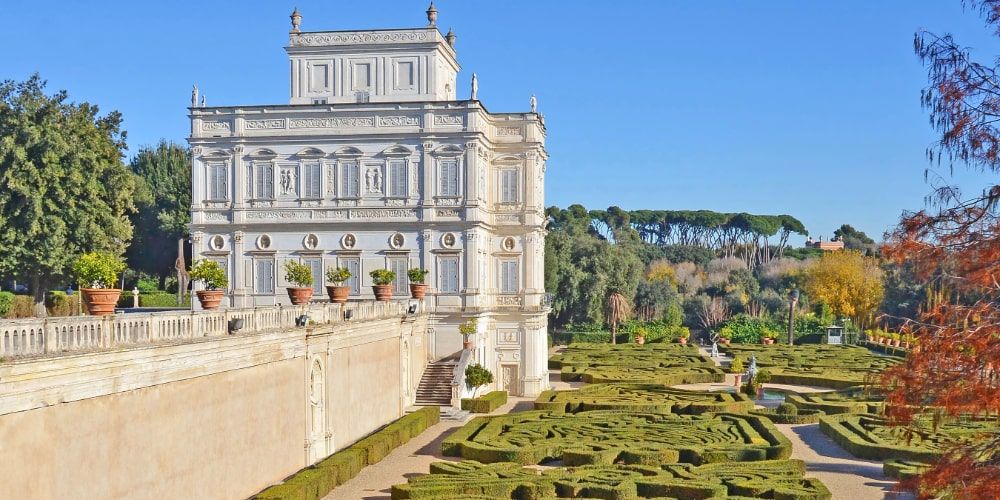
The Villa Doria Pamphilj Park is one of the largest in Rome, covering an impressive 184 hectares. This historic 17th-century villa was originally the residence of the noble Pamphilj family. What's more, you can see the Casino del Bel Respiro, also known as Villino Algardi, a Baroque architectural jewel set in Italianate gardens adorned with fountains, statues and geometric hedges. In addition to its historical significance, the park is a favorite spot for outdoor activities such as jogging, walking and picnicking, offering an oasis of tranquility away from the urban bustle.
Visit Doria Pamphilj Palace and attend a concert14. Ruspoli Castle in Vignanello
The Ruspoli Castle in Vignanello is an elegant fusion of aristocratic architecture and Renaissance landscaping. Here, the geometric rigor of the Italian garden dialogues harmoniously with the solemnity of the ancient walls. Built in 1531 on an earlier medieval fortification, the castle was transformed into a refined aristocratic residence by the Farnese family, then passed to the Marescotti and finally to the Ruspoli.
The garden, designed in 1611 by Ottavia Orsini, daughter of the creator of the Sacred Wood of Bomarzo, is a masterpiece of precision and symmetry, featuring perfectly sculpted boxwood hedges, dramatic fountains, and eye-catching perspective plays.
13. Boboli Garden
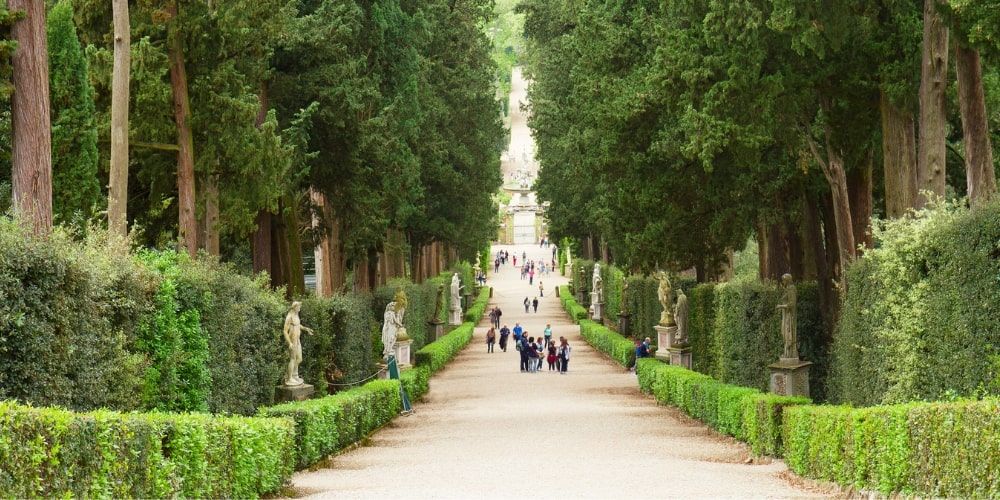
The Boboli Garden, located behind the Pitti Palace in Florence, is a masterpiece of the Italian garden, covering about 45,000 square meters. Begun in 1549 at the behest of Eleonora di Toledo, wife of Cosimo I de' Medici, the garden was designed by Niccolò Pericoli, known as Il Tribolo.
This vast green space is conceived as an open-air museum, enriched by ancient and Renaissance statues, artificial grottoes and monumental fountains. Among the most famous works is the Buontalenti Grotto, a Mannerist work of art created by Bernardo Buontalenti.
The garden unfolds along a central axis leading to the Amphitheater, originally decorated with the Ocean Fountain, later moved to the Isolotto. The amphitheater is surrounded by statues and offers a panoramic view of the city. Another interesting attraction is the Fountain of Neptune, located on a panoramic terrace, which depicts the god of the sea surrounded by sea figures.
Use the Florence Pass12. Gardens of the Royal Palace of Caserta
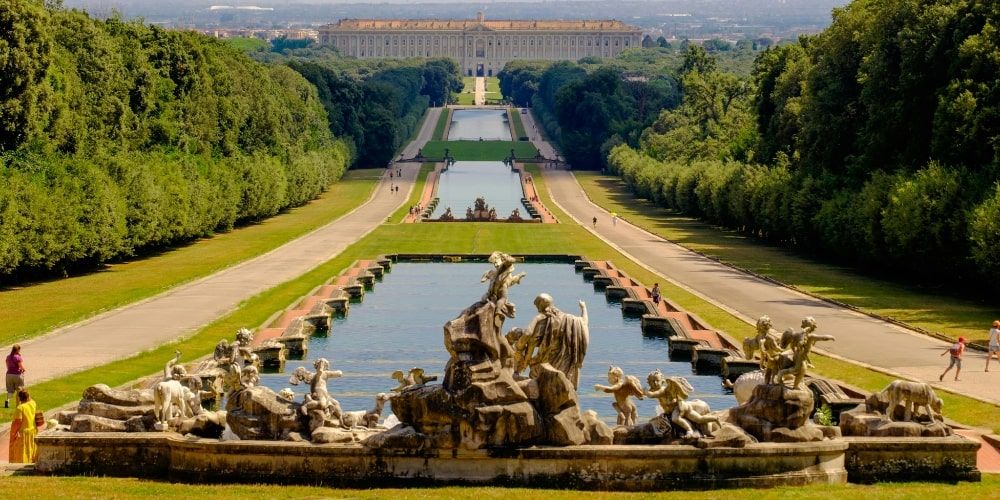
The Gardens of the Royal Palace of Caserta represent a sublime example of 18th-century landscape architecture, extending over more than 120 hectares and developing along a main axis of about 3 kilometers. Designed by architect Luigi Vanvitelli, they draw inspiration from the splendors of Versailles, harmoniously integrating elements of the Italian and English gardens. The central pathway, known as the “Via d'Acqua,” is adorned with a sequence of majestic fountains and waterfalls, fed by the ingenious Acquedotto Carolino, which channels water through a 38-kilometer-long system of canals.
Among the most emblematic works are the Fountain of Diana and Actaeon, crowned by a scenic waterfall, and the exquisite English Garden, spread over 24 hectares, rich in exotic and rare plants, commissioned by Queen Maria Carolina of Habsburg-Lorraine in 1785. These gardens enhance the magnificence of the Palace and also testify to the excellence of hydraulic engineering and landscape design of the time.
Discover the Royal Palace of Caserta11. Gardens of the Villa d'Este
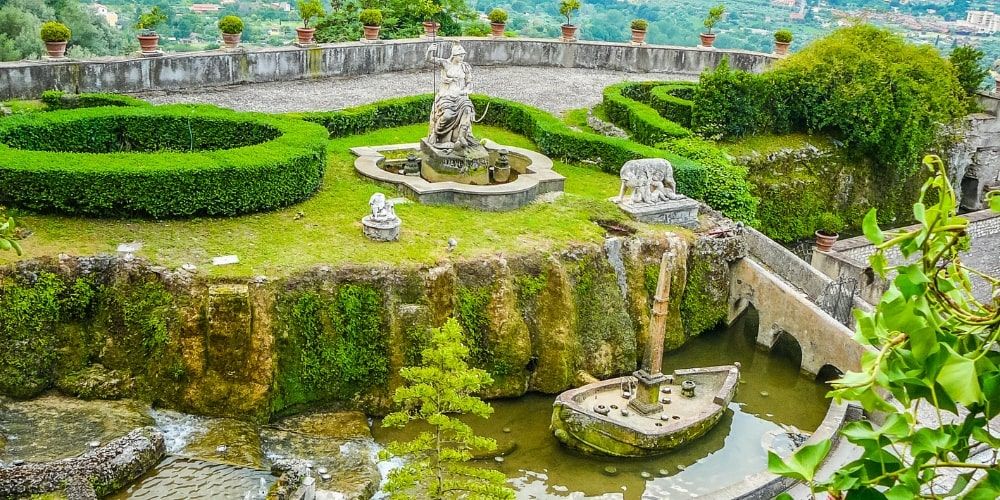
Located in Tivoli, the Villa d'Este is a Renaissance masterpiece, famous for its sumptuous gardens and exceptional concentration of fountains, nymphaea, and water features. Commissioned in the 16th century by Cardinal Ippolito II d'Este, the villa represents an emblematic example of the Italian garden, profoundly influencing European landscape design.
Among the garden's wonders is the Fontana dell'Ovato, with its elegant semicircular waterfall, and the striking Avenida delle Cento Fontane, adorned with a sequence of fountains that create a unique scenic effect. The villa was declared a UNESCO World Heritage Site in 2001, recognizing its priceless historical and artistic value.
Visit Villa d'Este10. Isola Bella Garden

The Isola Bella Garden on Lake Maggiore is a masterpiece of Italian Baroque, conceived in the 17th century by the Borromeo family. This Italian garden is laid out on ten overlapping terraces, forming a truncated pyramid adorned with statues, obelisks and fountains. In the center stands the Teatro Massimo, a dramatic piece of architecture that serves as a visual centerpiece.
The garden's flora is equally impressive, with exotic and rare species thriving thanks to the lake's microclimate. White peacocks roam freely among the pathways, adding a touch of living elegance to this earthly paradise. The combination of art, architecture and botany makes the Isola Bella Garden a must-see destination.
9. Gardens of the Reggia di Venaria

The Gardens of the Reggia di Venaria, located on the outskirts of Turin, represent a harmonious blend of history and modernity. Stretching over some 60 hectares, these green spaces are the result of a meticulous restoration project that has brought back the ancient Baroque splendor, integrating it with contemporary elements. Among the main attractions is Giuseppe Penone's Garden of Fluid Sculptures, an artistic path immersed in nature that dialogues with the historic remains. In 2019, these gardens were awarded the title of “Italy's Most Beautiful Public Park,” a recognition that testifies to their extraordinary beauty and cultural relevance.
Take a look at tickets for the Royal Palace of Venaria8. Heller Garden
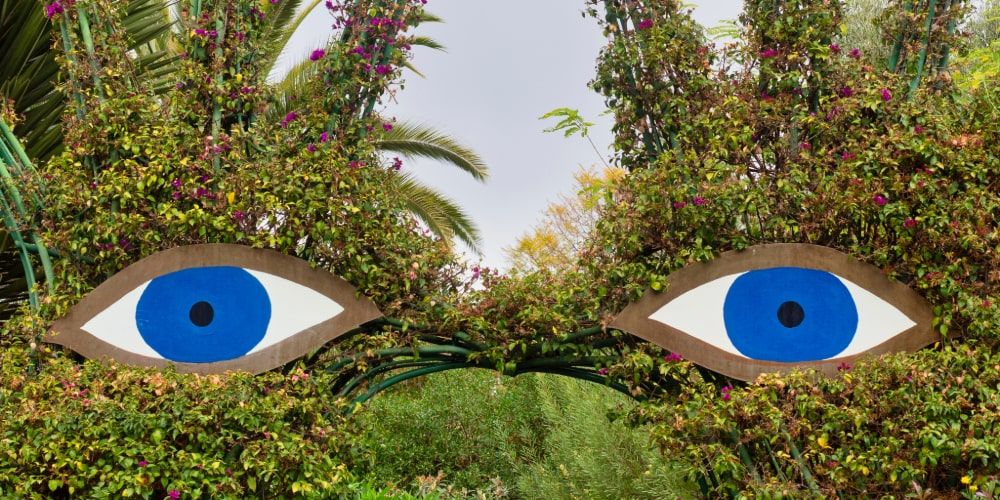
In Gardone Riviera, the André Heller Foundation Botanical Garden is an enchanting place where art and nature coexist. Created in the early 20th century by Austrian dentist and botanist Arturo Hruska, the garden is home to an extraordinary variety of plants from around the world, with more than 3,000 different species.
In 1988, Austrian artist André Heller acquired the property, enriching it with sculptures by internationally renowned artists such as Keith Haring, Roy Lichtenstein, and Auguste Rodin. Walking through the meandering paths, you can admire ponds, waterfalls, and art installations that create a dreamlike and contemplative atmosphere. This garden is a peculiar example of how the interaction between human creativity and natural beauty can create an unparalleled sensory experience.
7. Monumental Garden in Valsanzibio
The Monumental Garden in Valsanzibio, located in the foothills of the Euganean Hills, is a Baroque masterpiece built between 1665 and 1696 and designed by architect Luigi Bernini. It was commissioned by the noble Venetian family Barbarigo as a vow for the end of the plague of 1630.
The garden covers more than 10 hectares and boasts more than 60 statues carved from Istrian stone, harmoniously integrated with fountains, streams and water features. Among the main attractions is the boxwood labyrinth. The latter is considered one of the oldest and most intricate in the world. And it symbolizes man's spiritual path to purification and salvation.
Walk through the Monumental Garden of Valsanzibio6. Sacred Wood of Bomarzo
The Sacred Wood of Bomarzo, also known as Monster Park, is an enigmatic Mannerist garden located in Bomarzo, Lazio. Created in the 16th century at the behest of Prince Pier Francesco Orsini, the park is distinguished by its grotesque sculptures and bizarre architecture surrounded by dense vegetation.
Among the most famous works are the Orc, a giant head with a gaping mouth, and the Leaning House, a tilted construction that defies the laws of physics. These installations, carved directly into the local volcanic rock, depict mythological creatures and fantastic scenes. You can have an experience bordering on the surreal. The Sacred Forest is a unique place imbued with a gloomy and mysterious atmosphere.
5. Villa Taranto Botanical Gardens

The Villa Taranto Botanical Gardens, located in Verbania on the shores of Lake Maggiore, is a masterful work of landscape architecture and botany. Spread over 16 hectares, these gardens are home to some 20,000 species of plants from every corner of the globe. You can walk among thousands of colors and scents.
Founded in 1931 by Scottish Captain Neil Boyd McEacharn, the gardens combine elements of the Italian and English gardens, with terraces, fountains, and water features enhancing the landscape. Among the most fascinating attractions are the tropical greenhouses, where you can admire the majestic Victoria Cruziana, a giant water lily with impressive foliage. A path of about 7 km guides you through this botanical paradise.
4. Tarot Garden
The Tarot Garden, located in Garavicchio, near Capalbio, is an artistic park conceived by the eclectic French-American sculptor Niki de Saint Phalle. Inspired by Gaudí's Parc Güell in Barcelona and the Monster Park in Bomarzo, the artist began the creation of this garden in 1979, devoting more than seventeen years of work to it. The park is home to twenty-two imposing sculptures, up to fifteen meters high, representing the major arcana of the tarot, made of reinforced concrete and covered with mirrors, stained glass, and ceramics.
Some of these structures are habitable. In fact, Niki de Saint Phalle herself lived inside the Empress sculpture during the construction of the garden. Opened in 1998.
3. Gardens of Trauttmansdorff Castle
The Gardens of Trauttmansdorff Castle, located in Merano, cover an area of 12 hectares. They embrace a 100-meter drop that offers panoramic views of the city and surrounding mountains.
Opened in 2001, these botanical gardens are home to more than 80 different landscapes, divided into four thematic areas, “Forests of the World,” “Sun Gardens,” “Landscapes of South Tyrol,” and “Water and Terraced Gardens.” Each section features a rich variety of flora from around the globe, creating a botanical mosaic of rare beauty. Inside the castle, the Touriseum offers a fascinating journey through 250 years of Alpine tourism history, making the visit a complete cultural and nature experience.
2. La Mortella Gardens
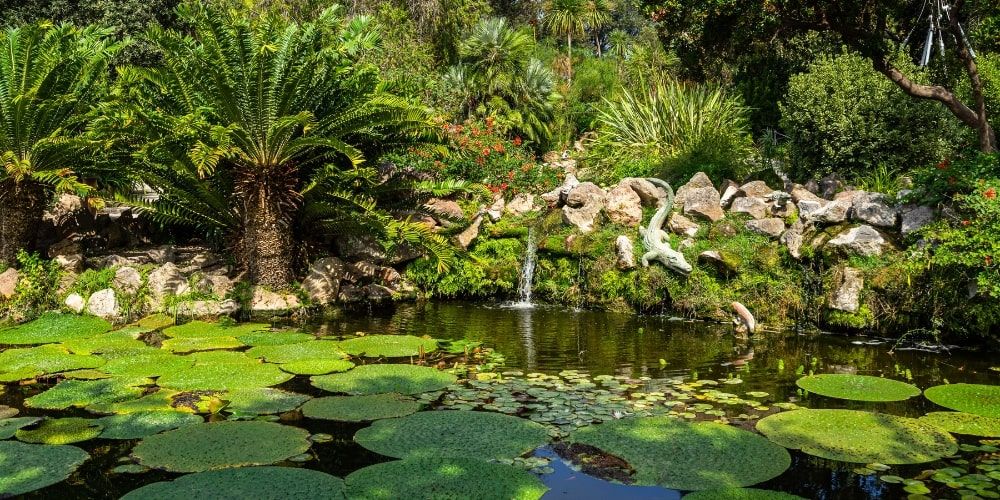
The La Mortella Gardens, located in Forio on the island of Ischia, are a lush oasis of exotic and tropical beauty. Created in 1956 by Susana Walton, wife of British composer Sir William Walton, and designed by renowned landscape architect Russell Page, these gardens cover an area of about 2 hectares.
The park is divided into two main areas: the lower garden in the valley and the upper garden on the hill, connected by meandering paths, stairways, and waterways that create an enchanted atmosphere. Among the most fascinating attractions are the three tropical greenhouses: the Victoria House, the Orchid Greenhouse, and the Temple of the Sun, which house a wide range of rare and exotic plants.
In addition to their botanical richness, La Mortella Gardens are known for their cultural activities, particularly the chamber and symphonic music concerts held in the Greek Theater during the summer months.
1. Gardens of Ninfa
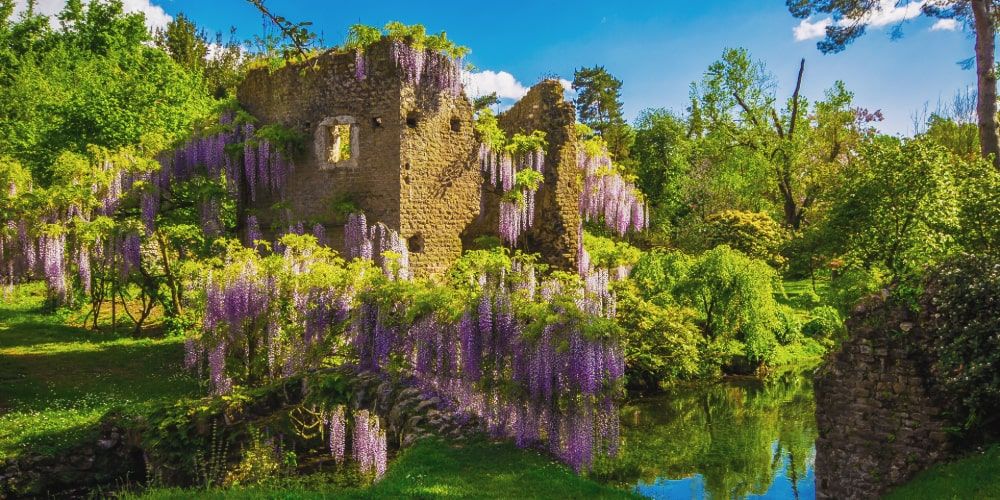
The Gardens of Ninfa, located at the foot of the Lepini Mountains in the province of Latina, are a sublime example of the marriage of poetry and medieval architecture. Built on the ruins of the ancient city of Ninfa, these gardens were declared a Natural Monument by the Lazio Region in 2000 to preserve their internationally renowned flora and fauna.
The name “Ninfa” comes from a Roman-era temple dedicated to the Naiads, the goddesses of spring waters, still present in the garden.
In the 20th century, Gelasio Caetani began the creation of the garden in the English style, planting botanical species from all over the world.
Today, the garden is home to more than a thousand varieties of plants and trees, including ornamental cherry trees, deciduous magnolias, and numerous varieties of roses that adorn the medieval ruins.
Crisscrossed by streams and the Ninfa River, the garden offers a humid microclimate that encourages lush growth of vegetation. Visits are allowed only on certain days of the year to protect the delicate environmental balance of this enchanting place.
About the author
Written on 04/03/2025


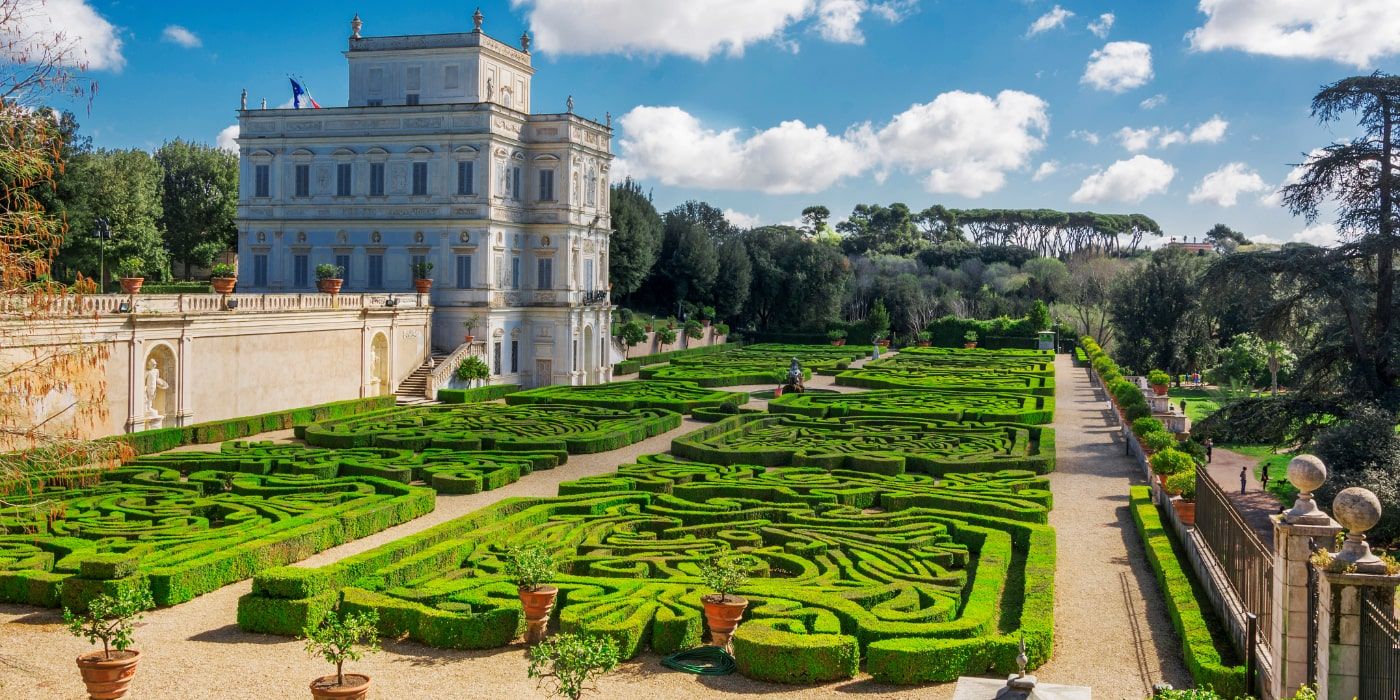
Rossella Friggione
Discover the 20 most beautiful gardens in Italy: a journey through nature, art and history in the country's most striking parks.